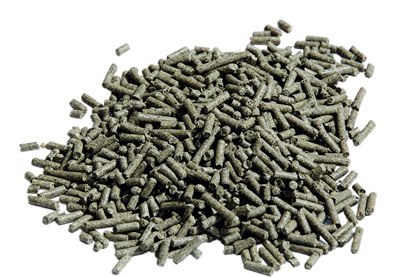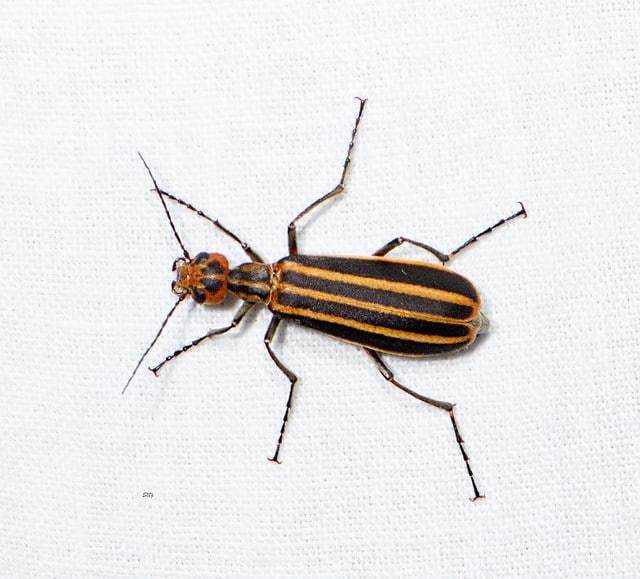FAQs About Horses and Alfalfa

Common (as well as a few less-common) things to consider when feeding this forage
Alfalfa is a perennial legume forage commonly used in horse diets. Nutrient-rich, highly palatable, widely available, and affordable, alfalfa can benefit a variety of horses. While many horse owners and farm managers consider alfalfa a mainstay in their feeding programs, the forage remains a source of questions and confusion.
In this article we’ll address some common, as well as less-common, considerations you need to make when feeding your horses alfalfa.
Q: What horses benefit from alfalfa in their diets?
Alfalfa is a great hay for some but not all horses, says Krishona Martinson, MS, PhD, professor and equine extension specialist in the University of Minnesota’s Department of Animal Science, in St. Paul.
“Compared to cool-season grasses (orchardgrass, timothy, fescue, Kentucky bluegrass, and perennial ryegrass), alfalfa is generally higher in digestible energy, crude protein, and calcium and is lower in fiber values and nonstructural carbohydrates” such as sugars and starches, she explains. “Therefore, alfalfa is best-suited for horses with elevated caloric needs—for example, performance horses and broodmares in late gestation and early lactation.”
Because of its nutritional characteristics, alfalfa is also a good choice if you’re managing thin horses, picky eaters, those prone to ulcers, and thin horses diagnosed with or prone to laminitis (inflammation in and damage to tissues that suspend the coffin bone within the hoof capsule), insulin resistance (a reduction in insulin sensitivity that makes it more difficult for cells to take up blood sugar for metabolism or storage), or other metabolic syndromes. Martinson cautions that alfalfa should be fed carefully to young, growing horses.
“Its energy density can lead to rapid growth rates, which can lead to a number of disorders in growing horses if not properly supplemented with other required nutrients,” she says.
Martinson also points out that alfalfa might be less suitable for horses that do not need additional calories, such as idle horses, horses on maintenance diets, or easy keepers, because it can lead to undesirable weight gain.
Dr. Krishona Martinson
Q: I was advised not to feed alfalfa because it can make my horse “hot.” Is that true?
High-quality alfalfa hay contains more easy-to-digest complex carbohydrates, providing more energy per pound than most grass hays. Although not scientifically proven, some horse owners attest that high amounts of energy in their horses’ diets cause undesirable behavior changes—often described as the horse being “hot.”
Indeed, consuming more energy without an adequate balance of energy expenditure (exercise) can lead to excess energy. To manage the horse’s energy intake simply feed alfalfa in smaller amounts than you would other roughages such as grass hay. On average, legume hay provides 1.19 Mcal (megacalories) per pound of digestible energy, whereas grass hay provides 0.91 Mcal per pound (Equi-Analytical). Therefore, a horse needs less alfalfa to meet its energy requirements.
Q: Can horses also graze alfalfa with the same benefits?
Horses can graze legume pastures and obtain the same nutritional benefits as they would eating legume hay. In a pasture setting, says Martinson, horses can graze alfalfa in pure stands or in mixtures with grasses, as is more common.
“The same guidelines for feeding alfalfa hay apply to grazing horses on alfalfa pastures,” Martinson says. “If planting alfalfa in pastures, plant a variety that does best under grazing (e.g., grazing-tolerant alfalfa). Like most forages, alfalfa will be very short-lived under continuous grazing. Therefore, when grazing alfalfa, it is critical to use best management practices for pastures by ensuring soil fertility and pH is adequate, resting the pasture (periodically) to allow for regrowth, not overgrazing (always leave at least 3 inches of stubble), dragging to disperse manure piles, and mowing any ungrazed patches (again, never shorter than 3 inches) when horses are rotated to a different pasture. Research has shown that horses tend to prefer legumes in a pasture setting, so watching grazing patterns to avoid overgrazing alfalfa is key.”
As with any lush pasture, it’s important to introduce horses slowly. Horses should never be overly hungry (make sure they’ve had free-choice access to hay) when you turn them out for the first time on an alfalfa pasture, and you should limit their grazing time initially, extending it slowly over two weeks. So, for instance, you might only allow your horse to graze for 15 minutes on Day 1, adding 15 minutes each day until you reach five hours. At that point you no longer need to make incremental changes.

Q: I live in a region where alfalfa doesn’t grow. Are there alternatives that will still allow me to feed alfalfa to my horses?
When formulating nutritional programs, horsemen must balance nutritional needs, cost, availability, palatability, and management practices.
If you have access to affordable alfalfa, it’s a good option for providing necessary roughage to certain horses. Not every region has baled alfalfa readily available, but you can usually find suitable alternatives in many other forms, including chopped, bagged, cubed, and pelleted. Manufacturers produce chopped alfalfa by processing long-stem hay to ½- or ¾-inch lengths and bagging it with agents to reduce dust. Often, with chopped and bagged alfalfa varieties, companies can provide a consistent product with a guaranteed nutrient profile.
Manufacturers use heat and steam to press finely ground and coarsely chopped alfalfa into either pellets or cubes, respectively.
Pelleted alfalfa can be advantageous when composed of high-quality ingredients, such as a high percentage of rich leaves, which contain most of the nutrients. Manufacturers often incorporate pelleted alfalfa into grain mixes for added nutrients, but you might need to provide additional long-stem roughage to horses to maintain their gastrointestinal health.
When feeding cubed alfalfa, you can reduce wastage by mixing it with grain-based feeds. There have been some reports of horses choking on cubed alfalfa, although those instances are rare. Nutritionists and veterinarians sometimes recommend soaking cubes in water for 10 minutes to soften them before feeding. All these alternative forms of alfalfa hay offer the added benefit of convenience for transportation and limited storage. Their packaging also helps protect them from elements that reduce their nutritional value, such as sunlight and rain.

Q: If blister beetles aren’t present in my region, do I still have to worry about them being in my alfalfa hay?
Blister beetles contain the toxin cantharidin, which causes blisters in horses’ mouths and gastrointestinal tracts. Sometimes farmers inadvertently bale these insects into their hay. Ingesting blister beetles can be fatal. Vanessa Corriher-Olson, MS, PhD, associate professor and forage extension specialist in the Texas A&M University Soil and Crop Sciences Department, in College Station, says “the toxicity of cantharidin to horses has not been definitely determined, but the estimated minimum lethal dose is 0.5 to 1 milligram per kilogram of body weight. The toxicity of cantharidin is comparable to that of cyanide and strychnine (the latter a poison used to kill birds and small rodents). Therefore, ingesting even a small number of beetles can create a toxicity for a horse. Many factors, such as a horse’s age, size, breed, and general health, can affect an individual animal’s susceptibility.
“There are thousands of species of blister beetles, so it is impossible for horse owners to be familiar with all of them,” she adds. “One of the more common types is the striped blister beetle.”
It is important to note that all blister beetles are very small and difficult to detect in hay—particularly when they’re crushed during harvest—with a quick, casual appraisal. They can contaminate alfalfa anywhere it’s being grown. So while hay producers can minimize the risk of blister beetle contamination, they can’t eliminate it completely. Therefore, Corriher-Olson recommends horse owners inspect all flakes within all bales, especially flowering alfalfa, since most of the beetles might only be in one part of one bale. Beetles feed on the flowers and tender leaves of the alfalfa plant, so the parts of bales with the most flowers are most likely to contain beetles.
Corriher-Olson also points out that buying alfalfa hay at the local feed store does not necessarily mean it’s sourced locally.

Q: I’ve heard that bright-green alfalfa hay is the best quality. Is color the only determinant for quality hay?
Characteristics of high-quality alfalfa hay include a high leaf-to-stem ratio; a fresh smell and appearance; absence of debris, including dirt, trash, and weeds; and color.
“Hay that is bright green can be an indication of quality but should not be the sole factor considered,” says Corriher-Olson.
For instance, hay that is not bright green on the outside of the bale might have good color on the inside. Additionally, bright green hay can still contain debris you would not see unless you break open a bale and evaluate its additional characteristics. A naturally bright green color can indicate high vitamin A content and proper curing without moisture damage or overheating during storage.
“Many factors can influence the quality of alfalfa, including growing conditions and season of harvest,” says Corriher-Olson. “The stage of maturity at harvest has by far the greatest influence on alfalfa nutritive value, assuming that other factors can be controlled during harvesting.”
One of the easiest ways to evaluate alfalfa hay’s nutritive value is by inspecting it. Ideally, it’s fine-stemmed, soft, and leafy. Coarse, stemmy hay is typically overly mature, lower in nutritive value, and less digestible for some horses. You’ll want to avoid overly mature hay, as studies have linked it with increased chances of impaction colic. Smell the hay—it should be fresh and free from any odor of mold or dust. The presence of white or bluish powder could indicate mold. If not overly hungry, horses generally avoid eating moldy hay, which increases wastage. If they do ingest it, they could suffer serious health consequences, such as asthma and mycotoxin poisoning.
Corriher-Olson suggests testing the hay to most accurately determine its nutrient content. “By taking a core sample from several bales and sending them in for analysis, horse owners can determine exactly how much nutrition is being provided by the hay,” she says.
Most states have county extension offices that can provide you with more information about where and how to get a hay analysis.
Take-Home Message
Alfalfa’s positive attributes make it an exceptional roughage source for many types of horses. When fed and managed properly, horses can benefit from alfalfa’s high nutritive value, and you can find it in a variety of convenient, consistent forms.
Written by:
Chelsie J. Huseman, MS, PhD
Related Articles
Stay on top of the most recent Horse Health news with



















